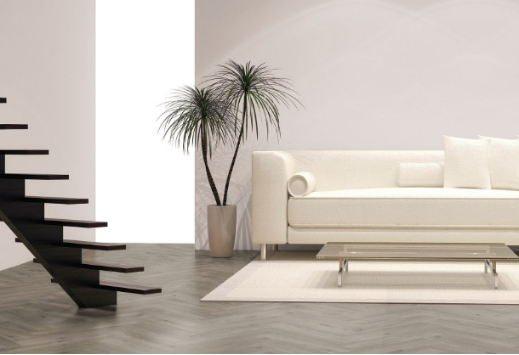

SPC flooring is an innovative and eco-friendly flooring solution developed using cutting-edge technology. It offers numerous benefits such as zero formaldehyde emission, mold resistance, moisture resistance, fire resistance, insect resistance, and easy installation. SPC flooring is manufactured by extruding PVC base material through a T-shaped mold using an extrusion machine. The PVC wear layer, PVC color film, and PVC base material are seamlessly bonded and embossed in a single-step process using three-roll, four-roll, or five-roll calender machines. This production process is simple, relying on heat to achieve adhesion and embossing without the need for adhesive.
One of the key advantages of SPC flooring is its environmentally friendly composition. SPC flooring materials are formulated to be free from heavy metals, phthalates, methanol, and other harmful substances. They comply with stringent standards such as EN14372, EN649-2011, IEC62321, and GB4085-83, ensuring their safety and sustainability. As a result, SPC flooring has gained widespread popularity in developed countries in Europe, America, and the Asia-Pacific market.
SPC flooring must meet the following primary performance requirements:
Low Shrinkage and Warpage with Excellent Toughness: SPC flooring should exhibit minimal shrinkage and warping while maintaining exceptional durability and resilience.
Superior Locking Strength and Proper Peel Resistance: It should maintain its shape and structural integrity under various environmental conditions, providing reliable locking strength between the interlocking planks and exhibiting a suitable level of peel resistance between the substrate and the wear layer. Achieving these performance characteristics heavily depends on the selection of high-quality materials, precise component composition, and advanced processing techniques.
To ensure the production of high-quality SPC flooring, the following processing requirements should be considered:
Stability in Continuous Production: Given the substantial extrusion output and the need for in-line lamination, it is crucial to maintain stable and consistent production throughout the manufacturing process.
Consideration of Screw Lifespan: SPC flooring consists of a high filler content, which can cause significant wear on the extruder screw. Therefore, it is essential to evaluate the lifespan of the screw and its impact on the overall production costs.
Material Dispersion, Plasticizing Performance, and Flowability: SPC flooring requires precise control over material dispersion, excellent plasticizing performance, and optimal flowability due to its thin profile, small thickness tolerances, and fast extrusion speeds. These factors contribute to achieving a uniform and high-quality product.
By adhering to these stringent quality and processing requirements, manufacturers can ensure the production of SPC flooring that meets the highest standards of performance, durability, and environmental sustainability.